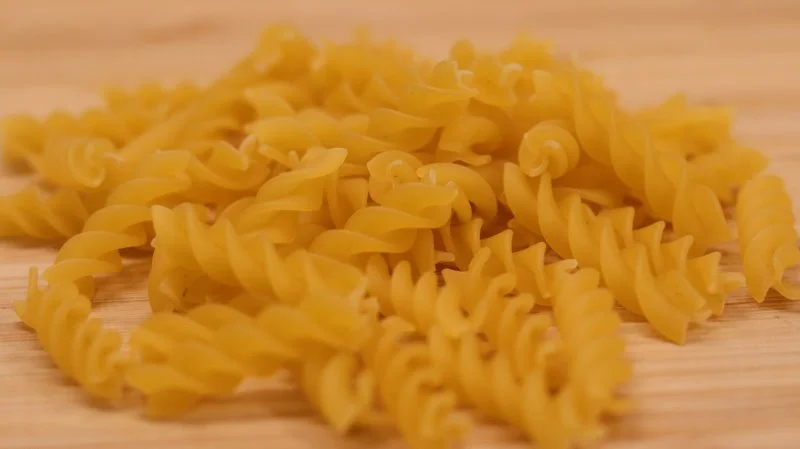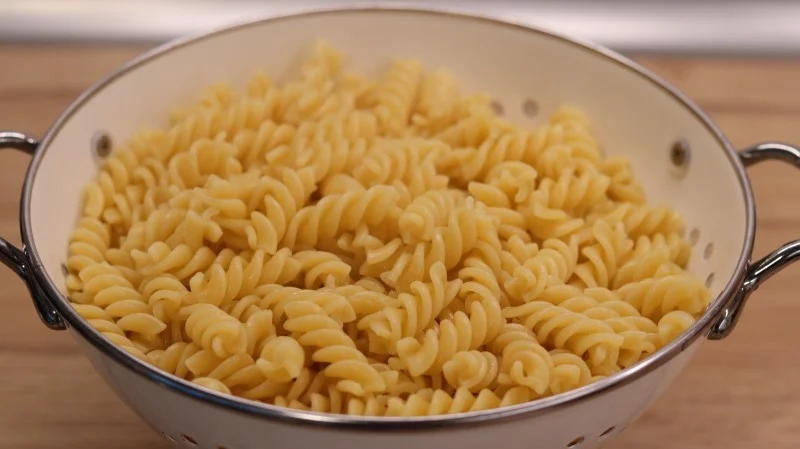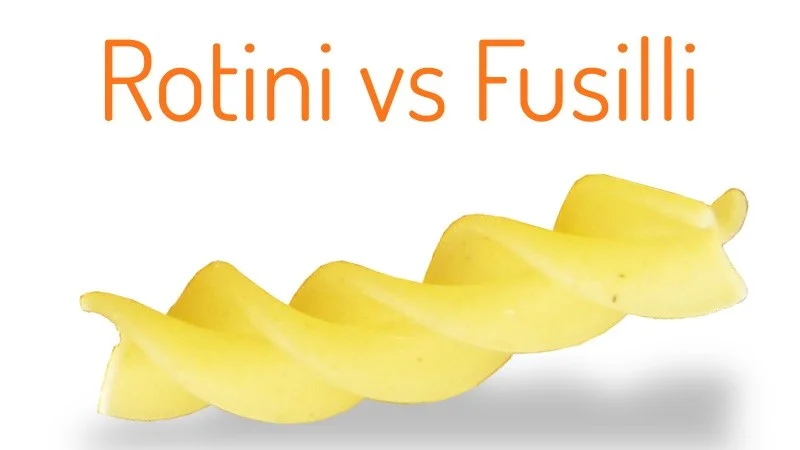Chances are, if you want to know the difference between rotini and fusilli, you’ve only used either one or the other in your whole life. And there is a reason why.
Rotini or Fusilli. They both are a type of Italian pasta, but what’s the difference between them? Continues reading to find out he answer, which might be more interesting than you think. And we’ll also cover the fake Rotini origins later in this article.
The Difference Between Rotini And Fusilli Pasta
The pond. Yes, you’ve read it right. The Atlantic Ocean, with a more precise term. That is the only difference between Rotini and Fusilli.
What does this mean?
In reality, there is no difference between Rotini and Fusilli. They are exactly the same kind of Italian pasta, one of the best known and most popular type, twisted into a corkscrew shape.

Fusilli is the original Italian name, the one that you will hear all over the world, and obviously in Italy. Rotini is the term for the same shape of pasta, that’s only used in the United States and Canada.
So if you’re from North America, the term Rotini is the one that you’re familiar with. For all other countries, you’ve been eating Fusilli all your life.
And my U.S. friends sorry to tell you, but I guess no Italian would understand what you want if you were to order a plate of Rotini in a local restaurant.
Fusilli And Rotini Are The Same
Let me show you two pictures side by side. They are both products of Italy’s most well known pasta maker, Barilla. One of them is from Amazon.com, the U.S. amazon site, and the other from the UK amazon.co.uk. By the way, these pictures are affiliate links. If you click on them and then buy something from Amazon, I might get a small percentage of the sale.
See? Rotini on one side, Fusilli on the other. Both from the same brand. And notice that the pasta looks just the same on both packages. So they are basically the same type of pasta, just marketed by a different name.
It’s also notable that Rotini are packaged in a 1 lb box, while Fusilli come in a 500 g container. The first is a U.S. measurement, while the latter is the metric, used almost all around the world. This again shows that Rotini are for the American market, while Fusilli target other countries.
Fake Rotini Origins
While I was researching background material for this article, I came across some writings that state that Rotini pasta is actually originated from the south of Italy. I would not link these as I really don’t want to give any credit to fake sources.
In reality, searching the Italian internet, Google and recipe blogs, no mention of the name Rotini appears whatsoever.
And I’d also like to mention that if Rotini was a real Italian pasta name, it should also appear in the form of Rotino. The ‘i’ ending (or in some cases ‘e’) in all Italian pasta names is the sign of the plural form, just like ‘s in English. And even though very rarely, but Italians do use their pasta names in singular. You cook spaghetti, a bunch of long and thin pasta. But one single piece is a spaghetto. Fusilli, fusillo. Penne, penna. Similar to that, one piece of pasta is a lasagna, but the correct name for a dish, where several layers are used, is lasagne.
I did find, on the other hand, a very descriptive line on Italy’s most well known pasta makers’ U.S. website. They state that “Rotini (meaning “twists”) are two-inch lengths of thick, screw-like pasta from Northern Italy. The shape was inspired by children, since it is fun to eat and pairs well with a wide variety of sauces.” There goes the story of Rotini being of southern Italian origin…
In my opinion, this also makes absurd the claim of some websites, stating that there is a difference between Rotini and Fusilli in their shape. Again, a clear example of spreading fake information.
The Real Origins Of The Name Rotini
Unfortunately, I could not find any reliable sources on what the real origins of the name Rotini were.
There is no Italian word that would resemble this word. Some claim it means small wheels, but wheel in Italian is routa, and there exists a wheel shaped pasta in Italian cuisine, called ruote (yes, simply the plural form of wheel). And by the way, this wheel shaped pasta is called rotelle in English… maybe a good starting point for another article?
I guess this would have been some marketing trick back in the days, Rotini sounding indeed quite Italian. Some company might have had a reason not to call their pasta Fusilli, they instead opted for this made up name ‘Rotini’, and it stuck. But again, this is only my speculation and I have no facts to back this up.
Rotini Or Fusilli – Simply Enjoy
So next time you eat Rotini or Fusilli, you’ll know that they are the same. And I guess the name does not really matter. What matters most is that they are a great member of the brilliant family of Italian pasta.
Cook your favorite pasta sauce and enjoy it with Rotini or Fusilli. To see how to cook them, simply click here. For more pasta tips click on the second link.





Mexico is kind of caught in the middle on this one. The label in Spanish uses the term Rotini, but the package is 500 grams, not 1 pound.